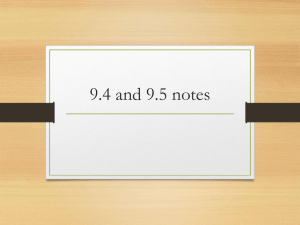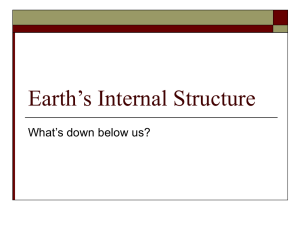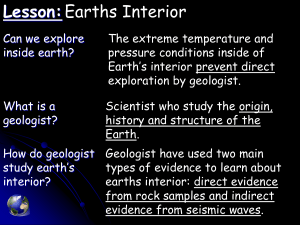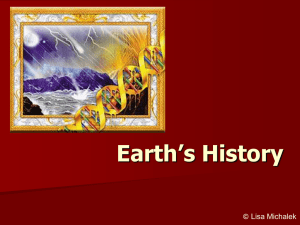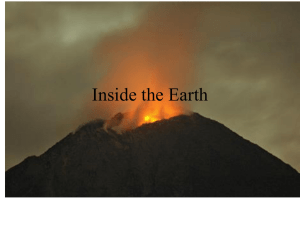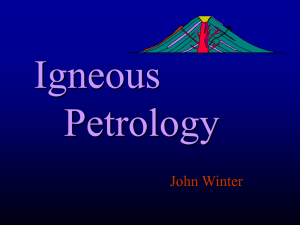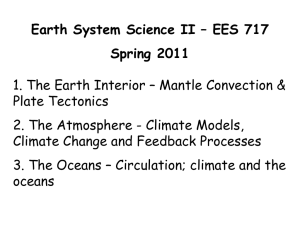sc.912.e.6.1
advertisement
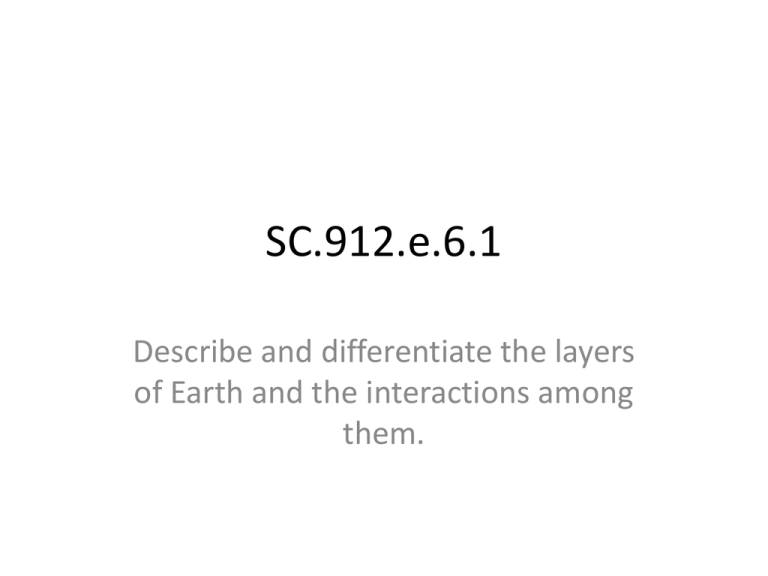
SC.912.e.6.1 Describe and differentiate the layers of Earth and the interactions among them. • Earth Structures - The scientific theory of plate tectonics provides the framework for much of modern geology. Over geologic time, internal and external sources of energy have continuously altered the features of Earth by means of both constructive and destructive forces. All life, including human civilization, is dependent on Earth's internal and external energy and material resources. 9.5 Mechanism of Plate Motion • • • • • Chapter 9: Plate Tectonics Online Field Trips Chapter Quiz Study Guide Summary (PowerPoint presentation) Web Quest: What if Pangaea Had Never Broken Up? • Web Resources – Continental Drift: Links on continental drift – Actions at Plate Boundaries: Links on plate boundaries • Animations Earth’s Formation inner core outer core The four layers are the inner core, outer core, mantle, and crust. mantle crust lithosphere asthenosphere Inner Core • solid Outer Core • liquid Earth’s Formation inner core outer core The four layers are the inner core, outer core, mantle, and crust. mantle crust lithosphere asthenosphere Mantle • solid with liquid properties Crust • solid Earth’s Formation inner core outer core mantle crust lithosphere The four layers are the inner core, outer core, mantle, and crust. The crust and top of the mantle are further classified by their properties into the lithosphere and the asthenosphere. Crust asthenosphere Lithosphere Mantle Asthenosphere DAY 2 Mechanisms of Plate Motion Describe the mechanisms of plate motion. What drives the slow movement of the plates and the convection in the mantle? Mechanisms of Plate Motion Causes of Plate Motion Scientists generally agree that convection occurring in the mantle is the basic driving force for plate movement. • Convective flow is the motion of matter resulting from changes in temperature. Mechanisms of Plate Motion Causes of Plate Motion Slab-Pull and Ridge-Push • Slab-pull is a mechanism that contributes to plate motion in which cool, dense oceanic crust sinks into the mantle and “pulls” the trailing lithosphere along. It is thought to be the primary downward arm of convective flow in the mantle. • Ridge-push causes oceanic lithosphere to slide down the sides of the oceanic ridge under the pull of gravity. It may contribute to plate motion. Mechanisms of Plate Motion Causes of Plate Motion Mantle Convection • Mantle plumes are masses of hotter-than-normal mantle material that ascend toward the surface, where they may lead to igneous activity. • The unequal distribution of heat within Earth causes the thermal convection in the mantle that ultimately drives plate motion. Mantle Convection Models Plate Tectonics VOCABULARY mantle convection ridge push slab pull Causes of Plate Movement Mantle convection, ridge push, and slab pull are hypothetical models for the causes of plate movements. Deep-sea trench Mid-ocean ridge Deep-sea trench Mantle convection This image shows one model of how mantle convection may contribute to plate movement. This image shows as section of the East Pacific Rise, a mid-ocean ridge. Describe the mechanisms of plate motion. What drives the slow movement of the plates and the convection in the mantle? Slab- Pull: where the descending slab pulls on the plate Ridge-Push: Force of gravity causing the cold lithosphere to move away from the ridge by sliding down over the asthenosphere, which gets more elevated toward the ridge Mantle-Convection: motion caused by flow of hot, less dense material upwards and cold, more-dense material downward The unequal distribution of heat with Earth’s interior drives plate motions Day 3 Create a table for Causes of Plate Motion include; personal definition and illustration for each motion
